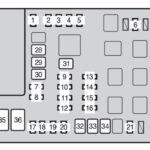Since the mid-1990s, the vast majority of cars manufactured worldwide have incorporated OBD2 (On-Board Diagnostics II) systems. This standardization has revolutionized vehicle maintenance and repair, offering both mechanics and car owners unprecedented access to diagnostic information. OBD2 compatibility is now a near-universal requirement for car manufacturers across the globe, ensuring that diagnostic tools can be used across different makes and models, simplifying issue identification and resolution. This widespread adoption has not only made vehicle maintenance more efficient but has also contributed significantly to improved vehicle reliability, performance, and adherence to stringent emission control standards.
OBD2: The Universal Diagnostic System in Modern Cars
The implementation of OBD2 systems in cars has brought numerous advantages to the automotive industry and car owners alike. Before OBD2, diagnosing car problems often required specialized equipment and brand-specific knowledge. OBD2 changed this landscape by providing a standardized interface and diagnostic trouble codes (DTCs) that are consistent across all compliant vehicles. This standardization means any mechanic with a generic OBD2 scanner can plug into virtually any car manufactured after the mid-1990s and retrieve valuable data about the vehicle’s health.
This capability is crucial for quickly and accurately diagnosing issues, ranging from engine malfunctions to emission control problems. OBD2 systems monitor a wide array of vehicle parameters, including engine performance, emissions levels, and sensor data. When a problem is detected, the system generates a DTC, which can be read using an OBD2 scanner. This not only speeds up the diagnostic process but also helps in pinpointing the exact source of the problem, leading to more effective and efficient repairs. Furthermore, OBD2 plays a vital role in ensuring vehicles meet environmental regulations by continuously monitoring emission-related components and systems.
Global Brands Embracing OBD2 Compatibility
The OBD2 standard is embraced by car manufacturers across all continents, demonstrating its global importance and effectiveness in vehicle diagnostics. Here’s a look at how different continental brands have integrated OBD2 into their vehicles:
American Brands
American car manufacturers are pioneers in adopting onboard diagnostics. Brands like Ford, Chevrolet, and Chrysler have been equipping their vehicles with OBD systems and subsequently OBD2 as the standard evolved. These brands, deeply rooted in the automotive history of the United States and Canada, recognize the value of OBD2 in simplifying vehicle maintenance and providing reliable systems for detecting mechanical and electrical issues.
European Brands
European automotive engineering is synonymous with innovation and quality, and their adoption of OBD2 is no exception. Renowned brands such as BMW, Renault, and Fiat, originating from Germany, France, and Italy, have extensively integrated the OBD standard. These manufacturers utilize OBD2 to enhance the diagnostic capabilities of their vehicles, ensuring efficient maintenance and accurate detection of potential problems, reflecting the high standards of European automotive engineering.
Asian Brands
Asian automotive brands have risen to global prominence, known for their reliability and technological advancements. Manufacturers like Toyota, Hyundai, and Honda from Japan, South Korea, and China have seamlessly integrated the OBD (On-Board Diagnostics) standard into their vehicles. OBD2 is crucial for maintaining the high standards of performance and reliability these brands are known for, facilitating efficient diagnostics and maintenance procedures worldwide.
African Brands
The automotive industry in Africa, while still developing its own brands on a larger scale, also incorporates global standards like OBD2. Manufacturers such as Volkswagen South Africa and Nissan Africa, producing vehicles within the continent, ensure their models are equipped with OBD ports. This commitment to OBD2 compatibility highlights the importance of standardized diagnostics across all markets, including Africa, for effective vehicle maintenance and repair.
Oceanian Brands
Oceanian automotive manufacturing, primarily represented by brands like Holden and Ford Australia, has also fully adopted the OBD (On-Board Diagnostics) standard. These brands, serving markets in Australia and New Zealand, utilize OBD2 systems to ensure their vehicles are easily diagnosable and maintainable. OBD2 is key to providing efficient after-sales service and support in the Oceanian region, aligning with global automotive service standards.
Conclusion: OBD2 as a Cornerstone of Modern Automotive Technology
In conclusion, OBD2 compatibility is a fundamental aspect of modern automotive technology, acting as a cornerstone for vehicle diagnostics and maintenance globally. Its widespread adoption across American, European, Asian, African, and Oceanian brands underscores its importance in the automotive industry. For car owners and mechanics, OBD2 simplifies the process of identifying and fixing vehicle issues, contributes to better vehicle performance and longevity, and helps ensure vehicles meet environmental standards. As automotive technology continues to advance, OBD2 remains a critical standard, ensuring vehicles are not only more complex but also more easily understood and maintained.
